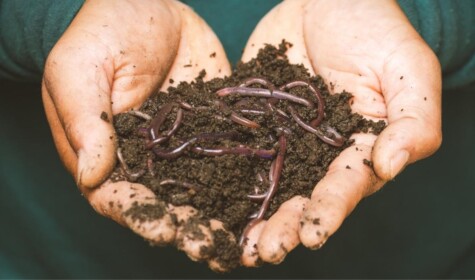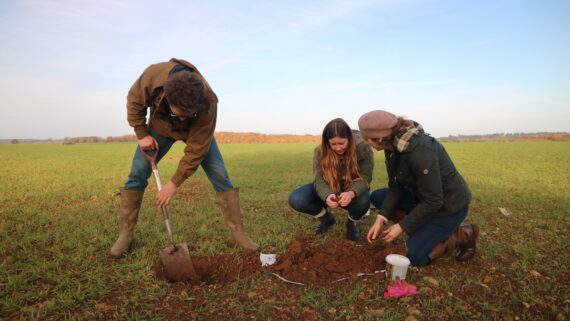In celebration of World Soil Day, December 5, 2021, we want to help farmers around the world to better understand their soil.
Our soils are an incredible resource – they have a remarkable ability to clean water and help mitigate climate change, they support biodiversity and are the reason we can grow nourishing food. However, the ability of soil to deliver these benefits has been compromised by widespread intensive farming – so much so it’s been estimated we have only 50 harvests left until our topsoil is degraded beyond repair. But not all is lost. Every day, farmers are transitioning to more sustainable farming practices which can not only prevent further deterioration of the land but can regenerate it too.
But where do you start? You can’t manage what you don’t measure – a clear indication of the health of your soil can help show you where to go next and illustrate the effectiveness of new management practices. Here are three simple soil tests from the Global Farm Metric that you can do to understand, manage and protect the health of your soil and the vital services it provides.
These tests indicate the state of your soils in terms of structure, the amount of organic matter and biodiversity. You can do this in your garden or allotment, or on your farm.
On farm scale, choose three fields that are representative of your land (e.g. with different soil types or different enterprises such as arable or permanent pasture). Follow the sampling protocols – time of year and weather (e.g. after heavy rainfall or frost) can sometimes affect your results, so tests are best done throughout the year, when soil is moist and not waterlogged or frozen. Let’s get digging!
Worm count
You may already know that earthworms are critical for soil structure, resilience to pests and pathogens (including aphids), nutrient cycling and biodiversity. Lesser known, is that there are three ecological groups of earthworms which uniquely influence soil functions: surface, topsoil and deep burrower. Identifying the prevalence of earthworm types can indicate what practices would be beneficial for your soil health.
The following protocol has been developed by Jackie Stroud in collaboration with the Sustainable Soils Alliance, Earth Watch Europe, UK Centre for Ecology and Hydrology, University of Sheffield and SRUC. Read full instructions here and find out more via the website and social media (@wormscience).
You will need:
- spade and ruler
- mat
- pot for worms
- a bottle of water
- notebook
Steps:
- Select where you will test your soil.
- For larger areas, dig five soil pits per field in a ‘W’ shape.
2. At each soil pit spot check the soil surface for the presence of middens and record results.
-
- Middens are heaps of biological material (usually 2-5 cm mounds of plant residue and earthworm ‘droppings’) left behind by deep burrowing (anecic) earthworms which have enhanced soil organic matter and ability to cycle nutrients.
- Learn more about identifying middens here.
3. Dig a 20cm x 20cm x 20cm soil pit and place soil onto a mat and place each whole earthworm you find into the pot.
Record the following:
-
- Are pencil size vertical burrows present?
- Total number of (adult and juvenile) earthworms
- Total number of adult earthworms (usually only a few – return juveniles to soil pit);
only adults have a saddle (the reproductive ring near the head). Top tip: a saddle can be more obvious on the underside of the earthworm. - The number of each type of adult earthworm (surface, topsoil, deep burrower)
- Use the identification key found here.
4. Return all worms to the soil pit and back fill with soil.
5. Upload your results, find interpretation support and community results at www.uksoils.org.







